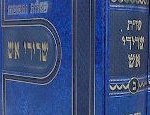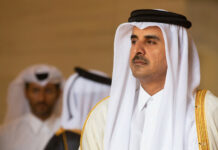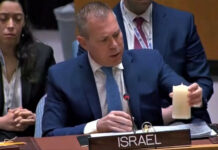 By Dayan Dr. I. Grunfeld
By Dayan Dr. I. Grunfeld
The yahrtzeit of the renowned Gaon Rav Yechiel Yaacov Weinberg stirs up memories of a remarkable epoch in the recent history of Jewry on the Continent. It was characterized by two outstanding personalities of genius, who created a bridge between East and West and had an extraordinary influence on the German-Jewish intelligentsia and especially two Orthodox rabbis who grew up between the two World Wars: Avraham Eliyah Kaplan, and Yechiel Yaacov Weinberg.
These two great men had much in common. They both came from Lithuania and were renowned Talmudists, writers and followers of the Mussar movement; both had found their way to the Jewish outlook of Samson Raphael Hirsch, and both were connected with the Orthodox Rabbinical Seminary in Berlin. Their aim was the same: to bring about a great revival of Talmud study in Western and particularly in German Jewry by a combination of what was best in the heritage of Lithuanian and German Jewry and especially by a synthesis of the cognate religious philosophies of Rabbi Yisrael Salanter and Rabbi Samson Raphael Hirsch. However, while Rabbi Avraham Eliyah Kaplan died in the prime of his life in 1924 and was thus spared the tragic catastrophe of European Jewry, Rabbi Weinberg personally experienced and survived the great Churban, broken in health but unbroken in spirit, and productive to his last day. When he died at the age of 88, he was universally recognized as one of the greatest authorities on Jewish law; a unique phenomenon in the world of scholarship, combining Talmudical authority of world fame with an equal mastery of modern secular knowledge. Unfortunately, most of Rabbi Weinberg’s manuscripts were lost when he was arrested by the Nazis in 1938. However, what was saved by the thoughtfulness and courage of one of his disciples, Rabbi Eliezer Berkovits, is sufficient to secure for Rabbi Weinberg an outstanding place in the history of Jewish halachic and philosophical literature. In the years 1961, 1962 and 1966 (shortly before his death), three bulky volumes of his responsa were published by the Mossad Harav Kook in Jerusalem under the characteristic title of Seride Esh, i.e., “Remnants of the Fire.” They deal with halachic questions addressed to Rabbi Weinberg from all over the world concerning the great problems of modern life – technological, social and personal. These three volumes have already become classics in the world of halachic literature. Like all great responsa works, they are – apart from their intrinsic halachic value – a faithful mirror of the time in which they were written and no doubt will become a fertile source for the research of future Jewish historians and sociologists. There seems little doubt that it is this monumental responsa work by which Rabbi Weinberg will be known and immortalized in Jewish history: as the Gaon Ba’al Seride Esh.
No less classical than his responsa are Rabbi Weinberg’s studies on Talmudical methodology published under the title Mechkarim beTalmud in 1938 while Rabbi Weinberg was principal (rector) of the Orthodox Rabbinical Seminary in Berlin. This publication laid the foundation for Rabbi Weinberg’s responsa work Seride Esh. It contains not only a great number of sugyos, explained in a novel manner by Rabbi Weinberg, but may be considered a handbook on Talmudic methodology. In Mechkarim beTalmud, the traditional Lithuanian derech halimud and the modern scientific approach to the study of Talmud became an organic unity. As for the typical Lithuanian method of Talmudical study which reached its zenith in Reb Chaim Brisker, Rabbi Weinberg had already described it in a series of essays which appeared in Wohlgemuth’s Jeschurun as far back as 1916, in the following manner:
“The first step in the task of reaching the deepest content of a halachah is to collect its details and then to unify them into an overall conceptual picture. Only then can one grasp the fundamental idea that underlies the details of a halachah and finally reach a logical definition of the halachic principle and thought-category. This combination of what is called in logic the inductive and deductive method infused new life and productivity into the Talmudic studies of the Lithuanian yeshivos.”
His “Derech Halimud”
Rabbi Weinberg always remained loyal to the Lithuanian derech halimud. But he added to it, or rather organically combined with it, the modern scientific approach to Talmudic studies which is mainly concerned with the history, structure, and textual integrity of Mishnah and Gemara and uses the historical and philological method in Talmudic research. This method had been applied before Rabbi Weinberg, with great benefit, by such great Orthodox scholars as David Hoffmann and Hanoch HaKohen Ehrentreu. Of special interest in the work Mechkarim beTalmud are the chapters which deal with the derech halimud of the rishonim and with the justification of the traditional explanation in Mishnah and Gemara of Exodus 22:4, against a rendering in a fragment of the Palestinian Targum which was found in the Cairo Geniza and published in 1930. Among the many other important essays which Rabbi Weinberg wrote on the problem of Talmudic methodology are Mechkarim beMishnah ubeTalmud in HaMeayen (Jerusalem, Tishrei 5715) and Mechkarim al Parshanut HaTalmudit leMishnah in Talpiot (New York, Iyar 5715).
Rabbi Weinberg’s philosophical writings dealing with hashkafa (Jewish outlook on life) were equally important and are on a par with his Talmudic writings. His Jewish religious philosophy was a synthesis of the philosophies of Reb Yisrael Salanter and Rabbi Samson Raphael Hirsch. These two great men molded his Jewish outlook on life and he dealt with their hashkafa in a great number of outstanding Hebrew and German essays written over a period of more than fifty years. Rabbi Weinberg’s essays on the great Jewish ethical revivalist movement known as Mussar first appeared in Wohlgemuth’s famous journal Jeschurun during the years 1918-1921 and have been republished in a revised form and in an English translation in Dr. Leo Jung’s anthology entitled Men of the Spirit (New York, 1964). There exists in Jewish literature no work which is comparable to Rabbi Weinberg’s essays on the Mussar movement as far as the penetrating, psychological insight into Jewish moral philosophy, the soul of the Lithuanian Jew and the world of the Lithuanian Yeshiva are concerned. These essays bear the imprint of a genius of the first order. Equally distinguished by their understanding of the great problems of our time are the essays contained in his work Volk der Religion (Geneva, 1949). They deal with such themes as “Jewish Traditional Loyalty and Creative Freedom”, “Faith and Modern Science”, “The Physical Survival and the Spiritual Salvation of the Modern Jew” and “Judaism and World Civilization”. The latter essay deals mainly with the religious philosophy of Samson Raphael Hirsch. Although Polish-born and Lithuanian-trained, Rabbi Weinberg had developed an extremely beautiful German prose style which was matched only by his mastery of modern Hebrew. As an appendix to the work Volk der Religion there was published the moving essay on “Religion and State in Israel.” It was obviously written under the first impact of the creation of the State of Israel in 1948. Although he never identified himself formally with the Zionist movement, Rabbi Weinberg considered the re-emergence of the State of Israel as a visible manifestation of the Divine Providence in Jewish history. “I firmly believe,” he used to say, “that the souls of our 6,000,000 martyrs gathered around the Throne of the Almighty and urged Him to show a visible sign of His loving care for His people and of the beginning of the Redemption of Israel.” Nevertheless, he was very concerned about the religious position in the young Jewish state and movingly pleaded with the workers and heroes of Israel not to betray our religious and national heritage. The same concern and urgent pleading is evident in his reply to Ben-Gurion’s well-known question “Who is a Jew?”
Influence of Rabbi Yisrael Salanter
There is hardly an Orthodox Hebrew journal of note, whether published in Israel or in the Diaspora, which does not contain a halachic or philosophical essay written by Rabbi Weinberg during the last 20 years of his life. All these essays have their roots in his Hebrew work Lifrakim (Warsaw, 5696-1936) which deals with hashkafah in the Aggados of the Talmud and their useful application in sermons, lectures and homiletical addresses. Influenced by the views of Reb Yisrael Salanter, Rabbi Weinberg laid great stress on the importance of the drashah as a means of popular education and inspiration and he often repeated the complaint of the founder of the Mussar Movement that the lamdanim had neglected the drashah at the expense of traditional Judaism. It is known that Reb Yisrael Salanter was not only a gaon in Talmudic learning, but a first-class orator and master of the drashah. Here too Rabbi Weinberg strove to emulate the example of his master. To anyone who studies the work Lifrakim it also becomes evident how greatly Hirsch’s writings had influenced Rabbi Weinberg’s Jewish philosophy, and that Rabbi Weinberg constantly tried to show the similarity between the views of Rabbis Hirsch and Salanter. (On the famous meeting between Hirsch and Salanter see Three Generations, London, 1958, p. 41.)
The extraordinary life story of Rabbi Yechiel Yaacov Weinberg – briefly described in the introduction to Seride Esh – led him from Lithuania to Berlin, from there to the Warsaw Ghetto and other concentration camps, and finally, after his liberation, to the calm resort of Montreux, Switzerland, where he spent the last 20 years of his life – secluded, but in constant correspondence with Jewish religious leaders throughout the world. The influence of the Gaon of Montreux – as he became known in later years – on the religious, halachic, and intellectual life of contemporary Jewry was enormous, though not outwardly apparent, because he shunned all publicity. His life and work awaits the description of future Jewish historians. It will be an uplifting task to write the story of the Illuy of Czechanowic, the brilliant bachur of the mussar yeshivos of Slobodka and Mir, the Rav of Pilwischki, the university lecturer of Giessen, the rector of the Hildesheimer Rabbinical Seminary in Berlin, the war-time president of the Agudas HaRabbanim of Warsaw who completed the cycle of his life in a remote Swiss townlet, having left all his titles and official positions behind him and yet wielding more influence than ever in the realm of the Jewish spirit by the sheer force of his personality and the stupendous range of his Torah scholarship and encyclopedic knowledge. It is a story full of grandeur though also of national and personal tragedy.
Perhaps I may be permitted to conclude this short sketch with a few personal reminiscences. As a young student I attended Rabbi Weinberg’s lectures at the University of Ciessen. His lectures were always crowded. Not only students of theology and oriental languages, but also students of other faculties and even university professors sat at his feet, impressed by the depth of his thought and enchanted by the slow and deliberate manner of his lecturing and his deep sonorous speaking voice. I can never forget his brilliant strictures against Bible criticism and his convincing arguments in favor of the authenticity of Jewish tradition. Few were able to combine Talmudic and Biblical scholarship as Rabbi Weinberg did. With his sharp dialectical mind and his wide range of knowledge, this proud Lithuanian Jew did not find it difficult to impart, even to non-Jewish listeners, a deep respect for Jewish traditional values.
The Stamp of Greatness
When I saw Rabbi Weinberg last in Montreux a few years before his passing he had lost nothing of his intellectual brilliance, his moral stature and his open-mindedness to the great problems of our generation. A universal genius and of a deeply religious mind, he bore the genuine stamp of greatness; simplicity. Although he gave an occasional shiur to the students of the Montreux Yeshiva, he mainly kept to himself and was surrounded only by a few selected students and personal friends. And yet his little room in Montreux was the religious and intellectual nerve center of an ever-widening circle of religious leaders, writers, thinkers and men of affairs in contemporary Jewish life. He davened in a little minyan and those who were privileged to listen to his talks on Shabbos afternoons can never forget the lucid and simple way in which that great man was able to deal with the deepest problems of the human mind. He could truly say of himself: nil humani mihi alienum est (nothing human is strange to me). Judaism was for him ennobled humanism and the Torah the formative power of Jewish life. The essence of Judaism he saw in the fact that it elevates all human activities into the sphere of the religious, and a tzaddik to him was a hero in the sanctification of life. The mitzvos he considered as the natural, functional expression of the living Jewish soul. He objected to religious observance turning into no more than routine habit instead of arising out of an inner need, bursting from the depths of the soul and becoming a dynamic force controlling the whole human being.
Rabbi Weinberg was deeply fond of nature. To accompany him on a walk along the shores of the lake of Montreux, surrounded by the majestic Swiss mountains, and to listen to his words of wisdom, meant to experience a living demonstration of the synthesis of soul, intellect, natural beauty and, above all, the beauty of holiness. But then, he was not only a great Sage, but also a great ba’al mussar.
Rabbi Yechiel Yaacov Weinberg was one of the rare great ones who succeeded in embracing in the course of a single life a whole period of Eastern and Western Jewish history and in telescoping these two worlds into a single unit. In Rabbi Weinberg’s genius East and West met in a rare cross-fertilization, the fruits of which will only be recognized in the future. Many years will pass until his true position in the history of Jewish life and thought will really be understood.
In one of his essays on Samson Raphael Hirsch, Rabbi Weinberg wrote: “His whole life was a single cry from the depth of an aching heart – a cry which is echoed in the words of the poet: Hitna’ari M’Afar Kumi Livshi Bigdai Tifartaich Ami “Shake Thyself from the dust, arise, put on the garments of thy glory, 0 my people!” With these words it seems to me, Yechiel Yaacov Weinberg wrote his own epitaph.
Dayan Dr. I. Grunfeld wrote this article shortly after his retirement from the London Beth Din (Court of the Chief Rabbi), the Central Beth Din of the United Hebrew Congregations of the British Commonwealth, which he served since 1938. Dayan Grunfeld enjoyed an international reputation for his original works on Orthodox Judaism in the English language, and especially for his translations and interpretations of the works Of Rabbi Samson Raphael Hirsch. The above is an extract from a work by Dayan Grunfeld on the Life and Work of Rabbi Yechiel Yaacov Weinberg, who himself was an exponent of the Hirschian Philosophy.
This article originally appeared in the Jewish Observer and is also available in book form in the ArtScroll/Mesorah Publications Judaiscope Series.
{Matzav.com Newscenter}












Beautifully written. Rav Weinberg zt”l, gadol she’bagdolim.
In his letter to professor Samuel Atlas, (printed by Marc Shapiro), he writes “with the blood of my heart”, how pessimistic he looks at the future of the Jewish people. Why? Because we don’t have, the sincere compassion and love to people of other Nations (Non-Yidden).
Only he, with so much A’Havas Yisroel could write such a thing.
sad to see that you omitted in your Yortseits posting the yortseit of Rabbi Yisrael Abuchatzira “the Baba Sali”
To # 2
The last battle of his life, was, to try to convince us to have proper respect for people who aren’t Yidden. He cited the Me’eiri and others.